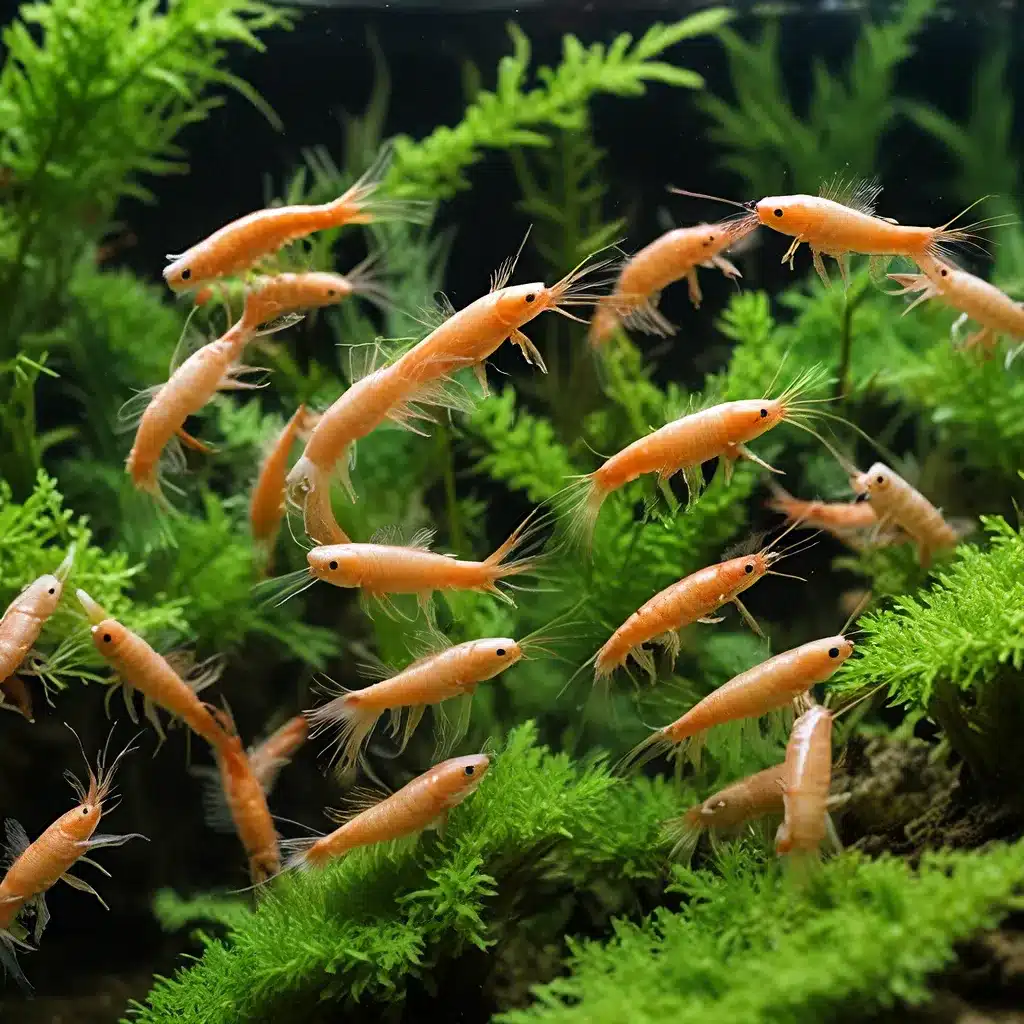
Unlocking the Secrets of Successful Shrimp Aquarium Keeping
Aquarium shrimp have grown increasingly popular among hobbyists in recent years, captivating enthusiasts with their vibrant colors, fascinating behaviors, and unique role in aquatic ecosystems. From the striking Red Cherry Shrimp to the elusive Crystal Red Shrimp, these incredible crustaceans offer a fascinating avenue for aquarium enthusiasts to explore. However, successfully breeding and maintaining healthy shrimp colonies requires specialized knowledge and attentive care. In this comprehensive guide, we’ll delve into the ins and outs of shrimp aquarium keeping, sharing expert tips and techniques to help you cultivate thriving shrimp populations in your home aquarium.
Understanding Shrimp Biology and Behavior
At the heart of successful shrimp breeding lies a deep understanding of shrimp biology and natural behaviors. Shrimp are intricate creatures that have evolved to thrive in a wide range of aquatic environments, from swift-moving streams to tranquil planted tanks. By familiarizing ourselves with their unique needs and characteristics, we can create the ideal conditions for them to flourish.
One key aspect to consider is the social dynamics of shrimp. Many species, such as the popular Neocaridina and Caridina varieties, are highly social and often thrive in groups. Providing adequate space and hiding spots can help reduce territorial conflicts and promote harmonious interactions within the colony. Understanding the natural behaviors of your chosen shrimp species, such as their feeding habits, molting cycles, and breeding rituals, will also be crucial in crafting the perfect aquarium environment.
Establishing the Ideal Aquarium Setup
Constructing a thriving shrimp aquarium requires a carefully considered setup that addresses the specific needs of your chosen shrimp species. Water quality is of paramount importance, as shrimp are generally sensitive to fluctuations in parameters like pH, temperature, and dissolved oxygen levels. Investing in a reliable filtration system, such as a high-quality aquarium filter, and closely monitoring water parameters can help ensure a stable and hospitable environment for your shrimp.
Substrate choice is another crucial factor, as shrimp often rely on the substrate for grazing, hiding, and breeding. Fine-grained substrates like sand or small gravel are typically preferred, as they provide ample surface area for the growth of beneficial biofilm, a primary food source for many shrimp species.
Incorporating live plants into the aquascape can also benefit shrimp by providing additional hiding spots, promoting a healthy ecosystem, and contributing to the overall aesthetics of the tank. Carefully selected plant species, such as Java Moss, Dwarf Hairgrass, and Anubias, can create a lush, naturalistic environment that caters to the needs of your shrimp colony.
Feeding and Nutrition for Optimal Shrimp Health
Proper feeding and nutrition are essential for maintaining the health and vitality of your shrimp colony. Shrimp are generally omnivorous, with a diverse diet that includes algae, biofilm, detritus, and occasional protein sources. A balanced diet consisting of high-quality shrimp-specific pellets, flakes, or wafers, supplemented with fresh vegetables and occasional protein-rich foods, can help ensure your shrimp receive all the necessary nutrients.
It’s important to avoid overfeeding, as excess food can lead to water quality issues and waste buildup, which can be detrimental to the shrimp’s well-being. Carefully monitoring their feeding habits and adjusting portion sizes accordingly can help maintain a clean, thriving aquarium environment.
Breeding and Reproducing Shrimp
One of the most rewarding aspects of shrimp keeping is the opportunity to breed and raise your own shrimp offspring. Successful shrimp breeding requires an understanding of the specific reproductive behaviors and needs of your chosen species.
Many shrimp species, such as Neocaridina and Caridina, exhibit a unique reproductive strategy where the female carries her eggs, known as “berried” shrimp, until they hatch. Providing the right water conditions, including stable temperature, pH, and dissolved oxygen levels, can create an environment conducive to successful breeding and larval development.
Additionally, maintaining a diverse and healthy shrimp population, with a balanced ratio of males and females, can increase the chances of successful breeding. Observing the courting behaviors and monitoring the development of the berried females can provide valuable insights into the breeding process.
Troubleshooting and Common Challenges
Even with the best-laid plans, shrimp enthusiasts may occasionally face challenges in maintaining the health and vitality of their colonies. Common issues can include stunted growth, high mortality rates, and unexpected disappearances or deaths.
Addressing these challenges often requires a methodical approach, starting with a thorough examination of water quality parameters. Fluctuations in pH, temperature, or the presence of toxins can all contribute to shrimp stress and disease. Consistent water testing and prompt adjustments can help mitigate these problems.
Additionally, factors like overcrowding, inadequate hiding spots, and improper feeding regimes can also impact the well-being of shrimp. By closely observing the behavior and appearance of your shrimp, you can identify potential issues and take appropriate measures to restore the balance and health of your aquarium.
Cultivating a Thriving Shrimp Ecosystem
Embarking on the journey of shrimp keeping can be a deeply rewarding and enriching experience for aquarium enthusiasts. By understanding the unique needs and behaviors of these captivating crustaceans, and meticulously crafting an optimal aquarium environment, you can cultivate a thriving shrimp ecosystem that serves as a testament to your dedication and expertise.
Whether you’re captivated by the vibrant hues of Red Cherry Shrimp, the ethereal elegance of Crystal Red Shrimp, or the hardy resilience of Amano Shrimp, the world of shrimp aquarium keeping offers a vast and fascinating realm to explore. By following the guidance outlined in this comprehensive guide, you’ll be well on your way to unlocking the wonders of shrimp breeding and establishing a vibrant, healthy shrimp colony in your own home aquarium.

